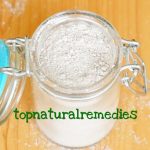Symptoms, Causes and Treatment of Meniscus Tear
The meniscus is the cartilage that can be found between the femur and the tibia, offering cushioning for the two bones.
The meniscus can be easily torn or damaged during physical activities that put pressure on the knee or twist it. That is why meniscus tear is a common injury among athletes, such as football or basketball players. There are also several everyday activities that can lead to a meniscus tear, and these include going from a squatting to a standing position very fast or carrying objects that are really heavy.

There are several treatments for a meniscus tear, ranging from home remedies to surgery. The risks of going through a meniscus tear can be reduced by carrying out some exercises aimed at strengthening the muscles of the legs or by choosing the proper techniques before engaging in intense physical activities or sports.
Contents
Meniscus tear causes
Pressure and twisting are the leading causes of a meniscus tear. Certain sports, lifting heavy objects and deep squatting can also trigger meniscus tear. Everyone is at risk of this injury because there are many other daily activities that can lead to the tearing of the meniscus. Older people present an increased risk because the cartilage begins to weaken as the years pass by.
Signs and Symptoms
When the meniscus tears you may hear a popping sound in your knee or experience a popping or slipping sensation when you try to walk. You will also experience swelling and pain in the affected area. You might not be able to walk, having the feeling that the injured knee is too weak to support you. Sometimes, the knee gets locked, and you will not be able to bend it. If you experience any of these symptoms, you should see a specialist as soon as possible.
Various Treatments
If you think you have a torn meniscus, you should not put any more pressure on the affected knee until you get checked by a doctor. Try to use crutches and refrain from engaging in any unnecessary physical activity that might cause pain to the knee.
Wrap the knee in an elastic bandage and, when you lay down, keep your leg elevated to reduce swelling. Also, place ice on the affected area for half an hour every 3-4 hours to reduce inflammation and pain. You can take an anti-inflammatory drug to get some relief.
With a minor tear, the pain and swelling will usually go away in 2 or 3 weeks. If it has been more than three weeks and the symptoms have not gone away or if they worsened, your doctor might recommend you to start physical therapy to increase mobility, reduce pain and strengthen the muscles that support the knee. If no positive results are obtained, surgery must be taken into consideration. The meniscus can be repaired or trimmed through a minimally invasive procedure. Physical therapy is necessary after surgery, to optimize stability and knee strength.




1 comentariu